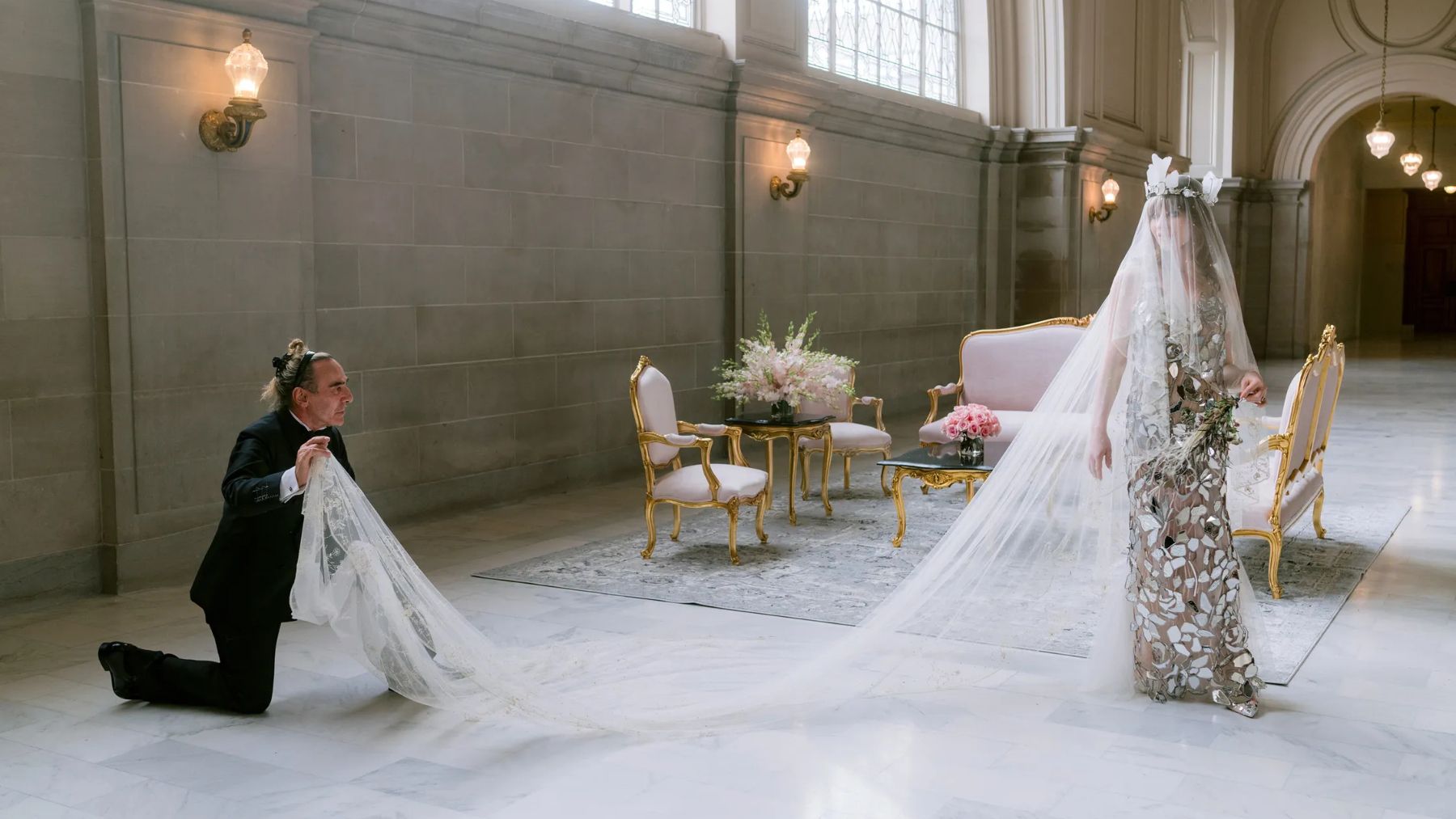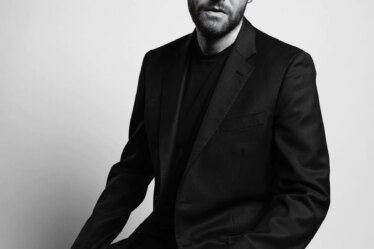
Hundreds of guests watched at San Francisco’s City Hall last November when Ivy Getty, of the billionaire Getty Oil family, dressed in a custom John Galliano gown and flanked by maid of honour Anya Taylor-Joy, wed husband Tobias Alexander Engel in a ceremony officiated by Speaker of the House Nancy Pelosi.
Millions more took in the spectacle online, where every detail of Getty’s over-the-top wedding weekend, from the “British Invasion”-themed welcome party to the all-night reception at the home of Ann Getty, the bride’s grandmother, which was covered in roses for the occasion, was shared on Vogue.com. All told, the website posted 100 photos of the festivities.
The wedding quickly went viral after that, earning coverage in Page Six, the Daily Mail and People magazine, among others. At Vogue, the story received over 1.2 million visitors, and to this day is the second most viewed wedding on the site.
But for the publication, it was more than just a web traffic win.
“It was definitely a turning point, because obviously, she has a recognisable last name, but she’s not a celebrity by any means,” said Chioma Nnadi, editor of Vogue.com “The response was so huge, we realised that this is something that our readers and the world at large are interested in.”
Over the past year, as Condé Nast has rolled out its strategy to move Vogue and other publications definitively out of the print era, weddings have emerged as a dark horse in the race for online relevance. Vogue has become the most coveted spot for a couple seeking press attention for their big day, in no small part because the weddings it covers frequently get picked up by other outlets, or are dissected on platforms like TikTok.
In July, visits to wedding-centric content amounted to 25 percent of Vogue’s overall online traffic, up 56 percent year-over-year. On average, wedding content drives 1.7 million monthly visitors to the site, where readers spend a collective 3.3 million minutes engaged with it.
Before, weddings were primarily relegated to bridal-specific publications like Brides or Martha Stewart Weddings. Town & Country has long covered the nuptials of the society set, but it was usually only the world’s biggest weddings — the likes of Kate and William or Meghan and Harry — that got the full fashion magazine treatment.
Now, publications are realising the power of weddings as a conversation starter and potentially, a revenue generator. Along with Vogue, other non-bridal publications, like Harper’s Bazaar, are also embracing weddings. As well, new outlets like Over the Moon, a wedding-focussed website founded by Vogue contributor Alexandra Macon, are bridging the gap between fashion and weddings. What unites them: a combination of voyeuristic fascination, can’t-look-away opulence and celebrity with a concept that everyone understands and experiences in some form in their own lives.
“The one thing that anybody can commonly relate to is a wedding,” said Savannah Engel, founder of Savannah Engel Public Relations, which handled the PR for Ivy Getty’s wedding and has begun taking on couples seeking media coverage of their wedding as clients. “To a certain extent, it’s an equaliser. Everybody knows someone who has gotten married.”
Matrimony Mania
As the number of brides who want their weddings covered has ballooned, more are hiring publicists, top-level photographers and stylists in order to land one of those coveted spots. Celebrity stylist Micaela Erlanger — a Vogue bride herself — said the majority of her bridal clients come to her with the goal in mind of having their wedding featured in the media.
“It really is about having an editorialised approach and really thinking about almost art direction, set design, styling, hair, makeup, the whole thing,” she said. “It’s not dissimilar from pitching a shoot in many ways.”
A wedding featured in Vogue might get a lengthy writeup — Getty’s clocked in at well over 2,000 words. But the dozens of photos, each with a caption, typically tell the story. Many Vogue weddings include a large number of photos — anywhere from 30 to 100 — each with a caption, as well as a 500-word-plus introduction on top of it. Nnadi admits there aren’t many stories on the other site that are that “robust,” and attributes the approach to Macon’s vision. (In addition to running Over the Moon, Macon, the former managing editor of Vogue.com, still pens many of Vogue’s most popular wedding stories, including Getty’s.)
“She knew and understood that, when you’re telling such a personal story, don’t scrimp on the details,” said Nnadi. “[When you] involve the bride and have those personal insights, you get that sense of warmth and personality.”
A celebrity bride or groom (or both) is an instant draw. But a spectacular venue or unique meet cute between two photogenic unknowns can draw just as much attention.
“I always say my favourite type of Vogue wedding is someone I’ve never heard of,” said Shannon McNulty, who has amassed over 50,000 followers on TikTok for her videos where she breaks down Vogue’s wedding coverage. “There is a mystery about ‘How did you get in? Who did you know to get featured in Vogue?’ You see a celebrity in the audience and you think ‘Who are these people?’”
What’s Next for Wedding Content
Nnadi said Vogue is focussed on becoming a “a real global wedding hub,” bringing in couples from across the world to showcase a variety of backgrounds, traditions and cultures.
Over the Moon, which began in 2015 as a blog chronicling wedding stories, has expanded to include a registry feature, a product shop and a styling service for brides. It’s used weddings as a springboard for partnerships that extend beyond the traditional bridal sphere, including a dress collection with Brock Collection, swimwear with Marysia and a luggage set with Steamline Luggage. Macon said that while these collaborations usually have some sort of tangential link to weddings — swimwear and luggage for a bachelorette party or honeymoon, for example — that’s not a firm requirement.
“People come to the site who aren’t even necessarily getting married and just want to buy a beautiful dress for an occasion,” she said. “But then we also obviously have the user who has a registry and might be a styling client. It’s just strategic and smart to serve both.”
For traditional publishers, monetising weddings runs into the same challenges as other types of content, namely unpredictable digital ad revenue. Lots of eyeballs on a wedding photo slideshow don’t always translate into dollars.
“It’s really hard to monetise,” Amy Odell, the former editor of Cosmopolitan.com who recently wrote about the virality of Vogue Weddings in her email newsletter, Back Row. “A wedding is a once in a lifetime event, a bridal customer is only going to theoretically shop with you one time in her life.”
Publications are finding ways to put weddings front and centre for advertisers as well as readers. Vogue is incorporating more affiliate-linked posts with outfit suggestions and expertise on planning for a wedding, whether you’re a guest or a bride. Town & Country dedicates two print issues a year to weddings, and works with advertisers that can speak to more niche elements of weddings. Travel companies, for example, gravitate towards destination wedding coverage, while jewellery brands are also interested in wedding content due to the connection to the products they sell, said Stellene Volandes, editor-in-chief of Town & Country.
The trend extends beyond the US and traditional fashion media: for the past half-decade, Condé Nast Traveller India has published a destination wedding-focussed supplement, and covers destination weddings throughout the year.
“Internationally, we’re now seeing a huge amount of interest in Indian weddings because of the scale,” said Divia Thani, the global editorial director of Condé Nast Traveler.
The wedding coverage boom is only just beginning — both Erlanger and Engel predict that attention will continue to grow as more brands launch bridal collections (just this year, Intermix, LK Bennett and Loeffler Randall all introduced bridal) and look to capitalise on other aspects of a wedding, such as a bachelorette party.
“Media brands are trying to get people on their site for a long period of time,” said Macon. “This is content that has a high level of engagement, people are poring over the images.”



